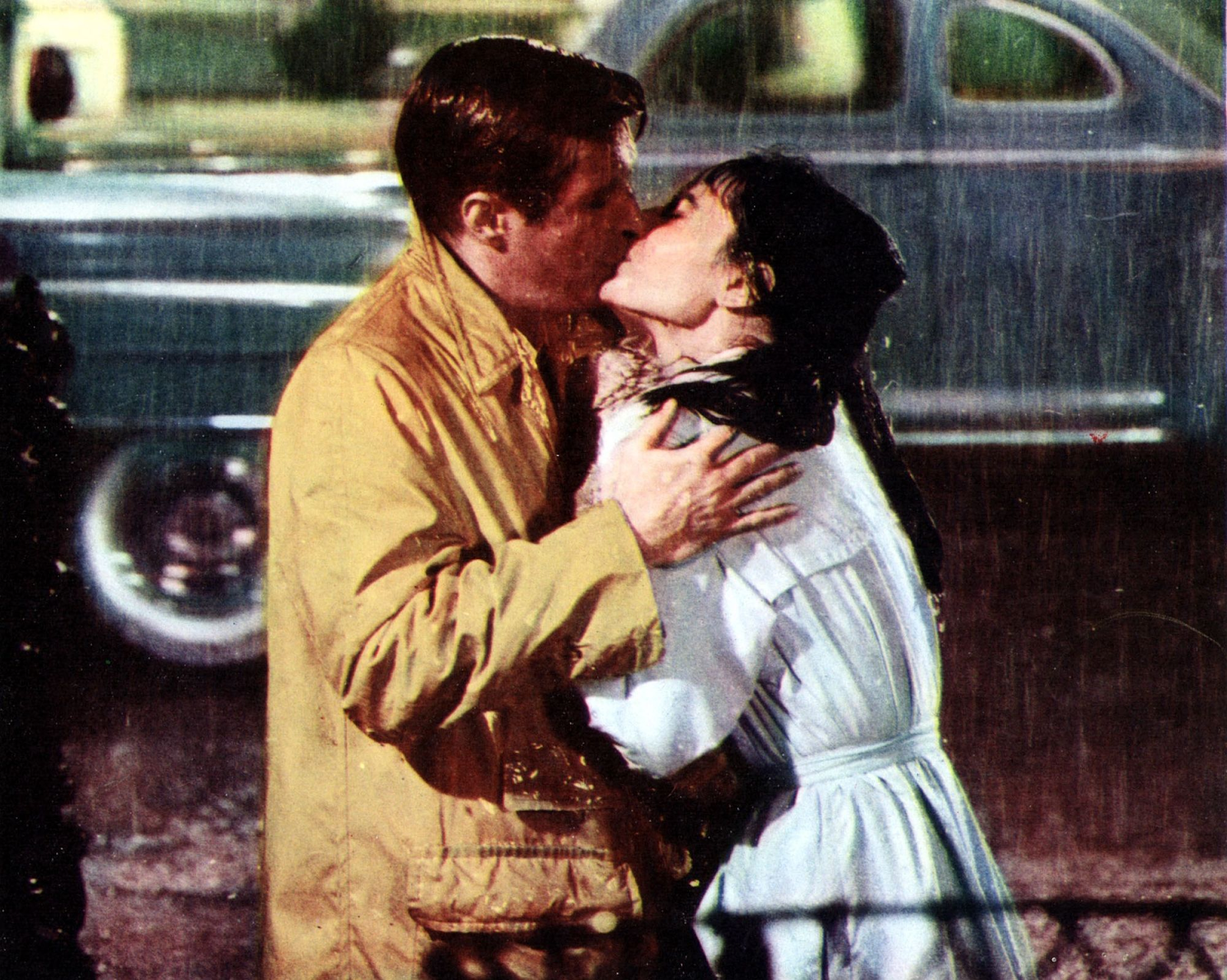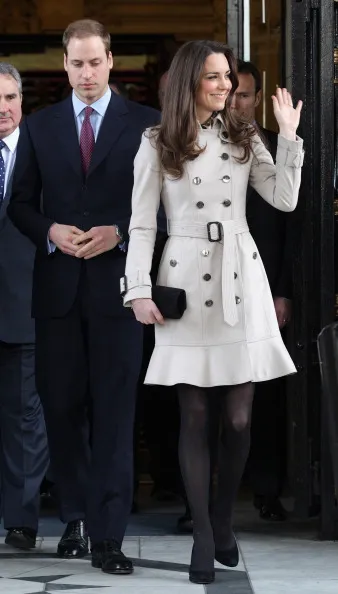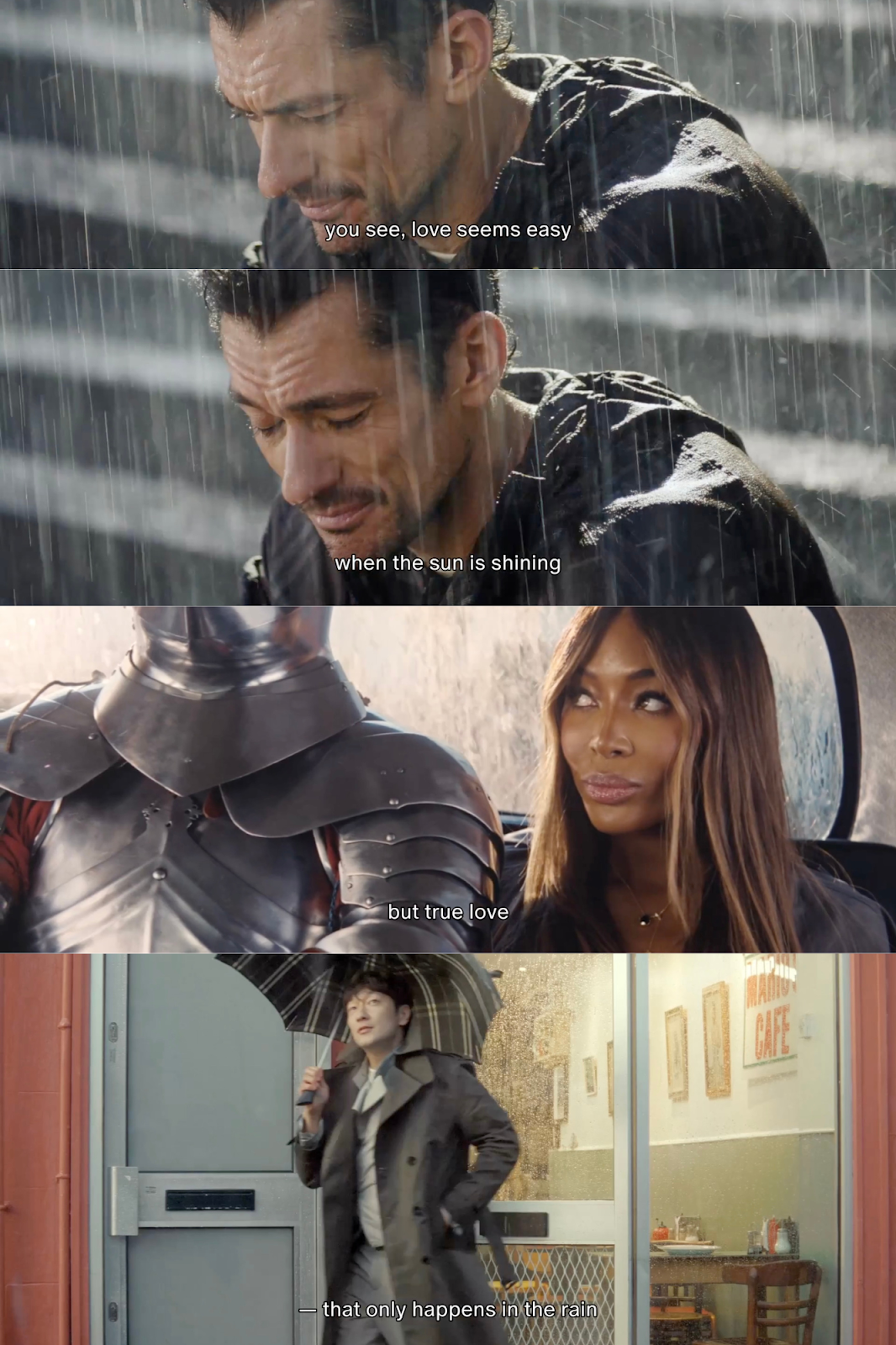Burberry and British Identity
It starts with a trench coat: cinched at the waist, flaring slightly in the wind, standing against a backdrop of gray London rain. It’s more than fabric. It’s mood, memory, and myth. Few garments carry the symbolic weight of Burberry’s trench: part uniform, part armor, part icon.
Burberry isn’t just a fashion house. It’s a visual language of Britishness. Founded in 1856, the brand has clothed soldiers, royals, rebels, and supermodels alike, evolving with each generation while holding fast to its roots. From the battlefields of World War I to the catwalks of Paris and the streets of East London, Burberry tells a story of heritage in motion.
More than any other British label, Burberry reflects the contradictions that define the nation itself: formality and rebellion, tradition and reinvention, class and counterculture. It’s a brand that has upheld aristocratic elegance and embraced youth-led streetwear. Through every reinvention, it continues to ask: What does it mean to look, and feel British today?
Back in 1856, a 21-year-old draper’s apprentice named Thomas Burberry opened a small shop in Basingstoke with one radical idea: fashion should function. British weather was brutal, and raincoats? Stiff, heavy, and hopelessly dull. So Burberry invented gabardine: breathable, water-resistant, and utterly revolutionary. Suddenly, staying dry didn’t mean sacrificing style. Fast forward to 1900, the British War Office calls for a new military coat: lighter, smarter, tougher. Burberry delivers the trench coat, crafted from gabardine with storm flaps, D-rings, and swagger to spare. By World War I, it was uniform. After? It became a legend.
From Bogart in Casablanca to Hepburn kissing in the rain in Breakfast at Tiffany’s, the trench became less about war and more about allure. A style icon, worn like armor with just the right amount of mystery.
Humphrey Bogart in American in Casablanca (1942)
Audrey Hepburn in Breakfast at Tiffany’s (1961)
Photo: The Luminaries Magazine
And that equestrian knight logo (EKD)? Debuted in 1901, designed by the public. Burberry’s always known how to turn a crowd into a legacy.
First Burberry Logo circa in 1901
Photo: Burberry
The trench coat became more than protection from the elements. It quietly embodied British character. Worn by soldiers, explorers, and aristocrats alike, it wasn’t just a garment; it was a national narrative stitched into daily life.
Photo: The Observer
British Women in Burberry Trench Coats (1920s)
Photo: Mary Evans
Few fashion houses possess iconography as instantly recognizable as Burberry’s. The classic beige trench and the distinctive tartan check aren’t just style choices. They’re cultural shorthand. A language of British identity whispered across class lines, subcultures, and generations.
The Burberry check, introduced in the 1920s as a trench lining, began as a signifier of upper-class taste, something subtle, tucked inside the coat. Over time, it became a global symbol of British heritage. But by the late '90s and early 2000s, its ubiquity, especially on mass-market accessories, sparked backlash. Once exclusive, the check became overexposed, caricatured in tabloids, and linked to “chav chic.” Yet that collapse only made its comeback more meaningful.
Burberry’s famous check prints.
Photo: The Fashion Law
Through editorial restraint and strategic recontextualization, Burberry reclaimed the check in the 2010s. On runways, in campaigns, and on a new generation of cultural icons. The pattern reemerged, no longer whispering, but speaking boldly of legacy, reinvention, and Britain’s complex relationship with class and style.
Emma Watson featured in Spring-Summer 2010
Photo: Pure Entertainment Group
For a brand born of aristocracy and military roots, Burberry’s pivot into youth culture was radical. In the Britpop ’90s, icons like Liam Gallagher wore the trench with defiant swagger. The check became a badge of rebellion. High fashion collided with pub culture, and Burberry stepped off the pedestal, claimed by a new generation who wore its heritage with irreverence.
Liam Gallagher in the 90s with a love for Burberry.
Photos: @90sanxiety on Instagram
That rebellious energy was reignited in the Riccardo Tisci era, starting in 2018. Known for his tenure at Givenchy, Tisci brought a streetwise edge to Burberry, infusing the heritage brand with urban energy, global casting, and unapologetic diversity. His campaigns featured not only supermodels but grime artists, queer youth, and dancers. A real reflection of modern Britain.
Burberry’s Spring/Summer 2020 collection by Riccardo Tisci
Photos: Burberry/WWD
Even while embracing rebellion, Burberry never lost its connection to refined British elegance. The brand has long been intertwined with the monarchy, embodying a kind of power rooted in tradition and taste.
Few figures embody this more clearly than Catherine, Princess of Wales. Her appearances in Burberry trench coats: belted, modest, and polished, have become part of her diplomatic wardrobe. These are not just outfits. They are carefully chosen symbols. When she steps off a plane in a beige Burberry coat, the message is unmistakable: tradition, grace, trustworthiness.
Catherine, Princess of Wales (Kate Middleton) in the classic Burberry Littleton Trench Coat
Photo: Glamour
This alignment between brand and monarchy is not about formal endorsement. It's about shared values. The timeless silhouettes: structured coats, tailored dresses, minimalist elegance echo the monarchy’s approach to image: composed, consistent, quietly commanding.
In this context, fashion becomes soft power. A garment speaks louder than a speech, projecting continuity and calm.
Yet even here, Burberry has evolved. Under Christopher Bailey and later Tisci, the brand’s womenswear moved beyond traditionalism, embracing strong shoulders, modern fabrics, and silhouettes that marry utility with grace. The Burberry woman today can be soft and strong, modest and bold, much like royalty itself in the 21st century.
Christopher Bailey’s collection for Fall 2017 and Spring 2012 (From left to right).
Photos: Elle, Refinery 29
In this way, Burberry doesn’t just reflect royal image, it helps shape it. By dressing both monarchy and modernity, the brand walks the line between past and present. Its glamour isn’t loud, it’s subtle, wrapped in gabardine, unmistakably British.
As the fashion world went digital, few luxury houses adapted as swiftly or as poetically as Burberry. Long before virtual runways became standard, the brand was experimenting with livestreams, immersive storytelling, and emotional digital experiences. It wasn’t just keeping up, it was leading, translating heritage into intimacy.
That sensibility came to life in the February 2025 campaign, It’s Always Burberry Weather: London in Love. That was a visual love letter to a city, a season, and a feeling. Couples danced in the drizzle. Strangers collided in the mist. The trench coat wasn’t just a garment, it was a character, a gesture, a shelter.
Photos: Burberry
The response was undeniable. A sentiment analysis of hundreds of Instagram comments revealed: ~79% were enthusiastically positive, praising the campaign’s beauty, emotion, and cinematic pull, ~24% were neutral, descriptive or observational and just ~5.5% were negative, rare exceptions in a sea of resonance.
The takeaway? In an age of algorithms and fractured attention, emotion still matters. And heritage, handled right, still moves people.
Today’s Burberry embodies a new kind of Britishness: multicultural, fast-moving, emotionally resonant. Its muses come from every corner, grime artists, queer youth, street poets, subcultural icons. Yet the message remains the same: Style in the storm. Elegance in motion.
Burberry isn’t just surviving the digital age. It’s redefining legacy within it: turning rain, tradition, and storytelling into something timeless in a medium built for the moment.
XOXO, The Fashion Stock Market
Editor: Felicity Field


















